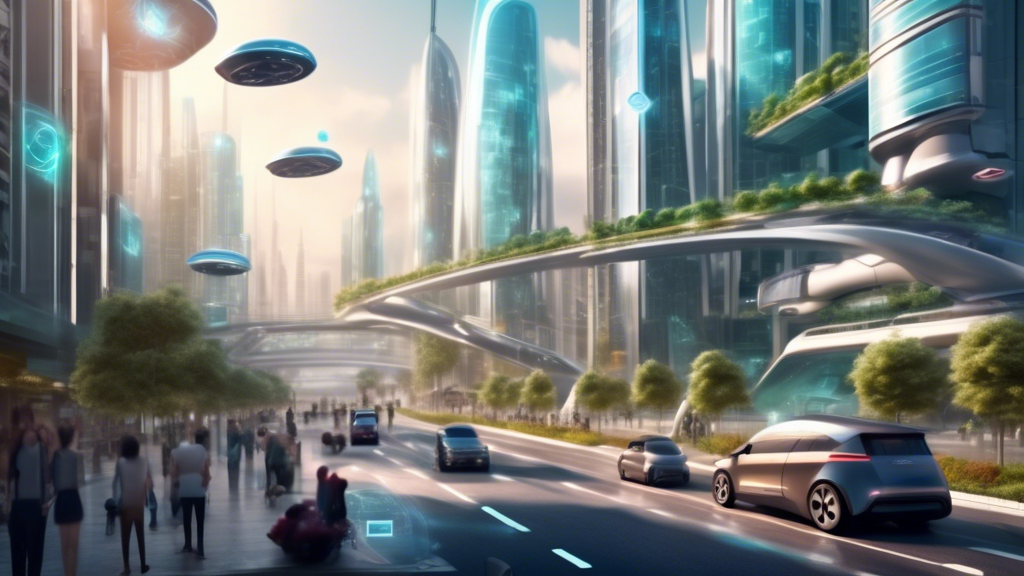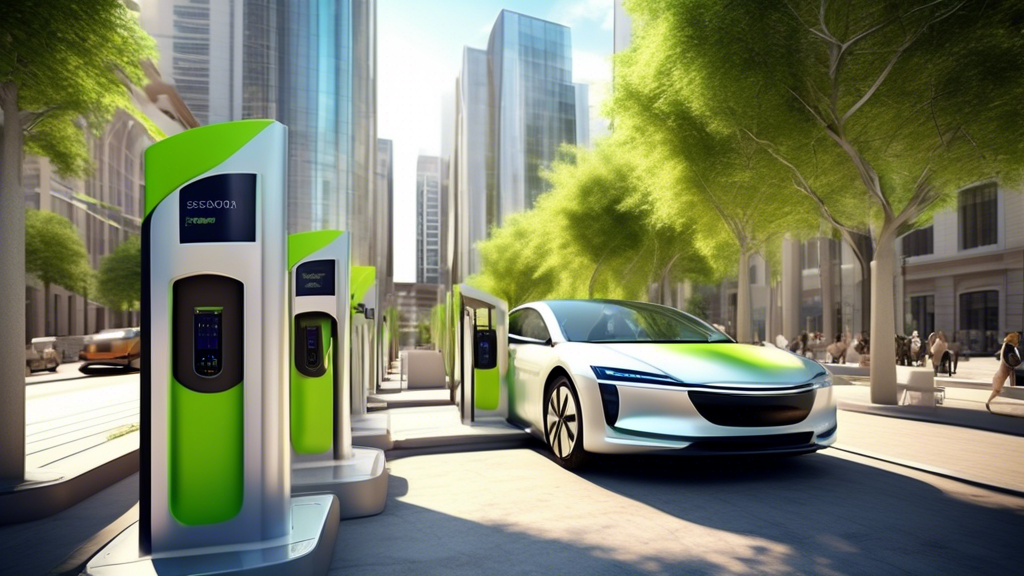Have you ever imagined a world where electric vehicles and renewable energy seamlessly work together to reshape our future? Welcome to the intersection of technology and sustainability, where EVs and renewables unite to create a cleaner, greener environment. This powerful alliance offers more than just environmental benefits; it promises economic advantages and technological innovations that are revolutionizing how we think about transportation and energy.
Imagine charging your electric vehicle using energy harvested from the sun or the breeze. The synergy between solar and wind power with EVs not only reduces reliance on fossil fuels but also drastically cuts carbon emissions. Across the globe, pioneering projects are integrating these clean energy sources with electric vehicles, setting shining examples for others to follow.
It’s not just about today; it’s about the future. Advances in technology, from smart grids to innovative energy storage solutions, are paving the way for even more efficient and dynamic interactions between EVs and renewables. These innovations ensure optimal energy usage and hint at an even more exciting horizon filled with possibilities.
But why should you care about this union? Beyond the obvious ecological benefits, adopting this combination can lead to significant economic gains for both individuals and businesses. Governments worldwide are rolling out policies and incentives, encouraging everyone to join the sustainable energy revolution. So, are you ready to be part of this transformative journey?
The Synergy Between Electric Vehicles and Renewable Energy
Ever wondered how electric vehicles (EVs) are revolutionizing sustainability? It’s not just their zero emissions. The true magic happens when EVs meet renewable energy sources like solar and wind power.
Introduction to the Convergence of EVs and Renewable Energy Sources
The union between EVs and renewables marks a remarkable step towards a greener future. As fossil fuels dwindle and environmental concerns rise, this alliance offers a sustainable solution. Electric vehicles, charged by clean energy, reduce carbon footprints while utilizing naturally replenished resources like wind and sunlight. Isn’t it fascinating how these dual technologies enhance each other’s efficiencies?
Benefits of Integrating Electric Vehicles with Solar and Wind Power
The integration of EVs with renewable energy systems yields multiple benefits. For instance, charging an EV using solar panels not only makes the vehicle more environmentally friendly but also reduces electricity costs. Moreover, when parked, EVs can feed excess energy back into the grid, creating a two-way street of power flow. Ever thought your car could pay you back?
Meanwhile, wind farms provide a steady and reliable power source, especially for public EV charging stations. This not only ensures the availability of green energy around the clock but also stabilizes the grid. Let’s not forget that EV batteries can store energy efficiently, managing demand peaks and reducing dependency on grid fluctuations.
Case Studies or Examples of Successful Implementations Globally
Consider Germany, where clever integration of EVs and renewables is paving the way for energy transformation. In pilot programs, households equipped with solar panels and EVs have achieved near self-sufficiency in energy. Who knew going green could make you an energy tycoon?
Denmark is another sterling example. The nation uses wind power extensively to charge EVs, taking grand strides toward its carbon-neutral goals by 2050. Their innovative smart grid systems allow EVs to act as an energy reserve, balancing the load during high-demand periods.
In the United States, cities like Austin, Texas, work towards a renewable-powered public transportation system using electric buses. These initiatives don’t just cut emissions—they redefine urban commuting by integrating smart technologies and renewable sources.
The synergy between EVs and renewable energy is not just a concept; it’s a global movement redefining sustainability. Are you ready to join the green revolution?

Technological Innovations Driving the Union
What happens when cutting-edge technology transforms the way we power our vehicles and sustain our energy needs? A revolution is born. Electric vehicles (EVs) and renewable energy sources are converging in remarkable ways, thanks to groundbreaking technological innovations. These advancements are enabling a more seamless integration than ever before.
Overview of New Technologies Making EVs and Renewables More Compatible
We stand at the precipice of an exciting era where technology bridges the gap between electric mobility and clean energy. Emerging innovations like vehicle-to-grid (V2G) interfaces allow EVs to communicate directly with power grids. Imagine your car not just as a vehicle but as an active participant in the energy ecosystem, effortlessly storing and returning electricity to the grid as needed.
Smart charging systems are redefining the charging experience. No more plugging into a socket and hoping for the best. Advanced algorithms now determine the most cost-effective and energy-efficient times to charge. Are you ready to charge your car while you sleep, potentially at an off-peak rate? Technology makes this possible.
The Role of Smart Grids and Energy Storage Solutions in Optimizing Usage
Smart grids are not just a buzzword; they’re the backbone of this synergy between EVs and renewables. These grids possess the intelligence to adapt to fluctuating demands, reducing energy waste. With real-time data analysis, they optimize the distribution and consumption of renewable energy.
Energy storage solutions like modern lithium-ion batteries are revolutionizing the game. They store excess energy generated from renewable sources for later use, balancing supply and demand. Your EV could soon be part of a vast, interconnected network, contributing to a resilient energy grid. Who knew your vehicle could be so versatile?
Additionally, the integration of artificial intelligence (AI) is enhancing grid efficiency. AI algorithms predict energy demand patterns, helping utilities plan and allocate resources more effectively. Say goodbye to unexpected outages and inefficiencies.
Future Advancements That Could Further Enhance This Synergy
While current technologies are impressive, the future holds even greater promise. Emerging innovations like solid-state batteries promise higher energy densities and faster charging times. Is the day coming when charging your EV takes less time than filling up a gas tank?
Quantum computing is on the horizon, poised to elevate energy optimization to unprecedented levels. Imagine processing vast amounts of data instantly, achieving peak energy efficiency. It’s not science fiction; it’s the future. Are you ready for a world where your EV refuels itself with precision? It’s closer than you think.
Moreover, advancements in wireless charging could soon eliminate the need for cumbersome cables entirely. Imagine parking your EV in any spot and having it charge automatically. The convenience factor skyrockets while still being green.
The blending of blockchain technology is also shaking up the landscape. This secure, transparent system could manage energy transactions and exchanges effortlessly, ensuring fair pricing and efficient distribution. Will the energy market soon resemble a well-oiled (or should we say, clean-powered) machine?
As we move forward, the merging of EVs and renewable energy through cutting-edge technologies paves the way for a sustainable future. The possibilities are endless, but one thing is certain: The harmony between electric vehicles and clean energy will only strengthen, thanks to these technological marvels. Is it time for you to join the green revolution?

Environmental and Economic Impact
Did you ever wonder how the union of electric vehicles (EVs) and renewable energy could transform our world? The combined use of EVs and renewable sources drastically reduces carbon emissions, a huge leap forward in combating climate change. By replacing fossil fuels, this synergy promotes cleaner air and contributes significantly to a healthier environment.
Consider this: every EV powered by solar panels or wind turbines cuts down on the emissions of carbon dioxide and other pollutants. According to various studies, switching to EVs paired with renewables can decrease greenhouse gas emissions by up to 70%. Imagine the positive impact if this practice were adopted worldwide.
Beyond just environmental benefits, this dynamic duo offers substantial economic advantages for consumers and businesses. For starters, using an EV recharged with renewable energy slashes the cost of electricity compared to traditional fuel. The cost savings over the lifespan of an EV can be considerable, potentially saving owners thousands of dollars.
Businesses, too, reap rewards from this partnership. Reduced energy costs mean lower operational expenses, enhancing profitability. Additionally, adopting such a sustainable approach elevates brand image, attracting eco-conscious customers and investors. Could this be the competitive edge your business needs?
Government policies and incentives further bolster the adoption of EVs powered by renewables. Many countries offer tax credits and rebates for purchasing EVs or installing solar panels. Some regions even provide grants and subsidies for businesses integrating renewable energy into their operations. Are we witnessing a worldwide policy revolution in sustainable energy?
These incentives not only reduce upfront costs but also accelerate the widespread adoption of sustainable practices. By embracing these technologies, countries signal their commitment to a sustainable future, encouraging others to follow suit. Thus, the collaboration between governments, businesses, and consumers becomes vital in driving this positive change.
So, why wait? Tap into the environmental and economic benefits of integrating EVs with renewables now. Isn’t it time to be part of the solution and not the pollution?
As we stand at the crossroads of innovation and sustainability, the union of electric vehicles and renewable energy shines as a beacon of promise. This synergy holds the potential to revolutionize how we power our lives, combining cutting-edge technology with environmental stewardship. From the impressive integration of solar panels charging EVs in sunny California to wind-powered charging stations in Denmark, success stories around the globe highlight the transformative impact of this partnership.
Technological advancements in smart grids and energy storage continue to enhance this relationship, making it possible to optimize energy consumption and reduce wastage. These innovations offer a glimpse into a future where renewable energy and electric transportation seamlessly intertwine, driving us toward a sustainable economy.
The benefits aren’t just environmental. Lower emissions translate into a cleaner planet, while consumers and businesses enjoy significant economic savings. Coupled with attractive government policies and incentives, the case for embracing this synergy becomes almost irresistible. So, the question is: Are we ready to fully embrace this sustainable future, where clean energy meets mobility, or will we let this opportunity slip by? The choice is ours, but the advantages are clear and compelling.
